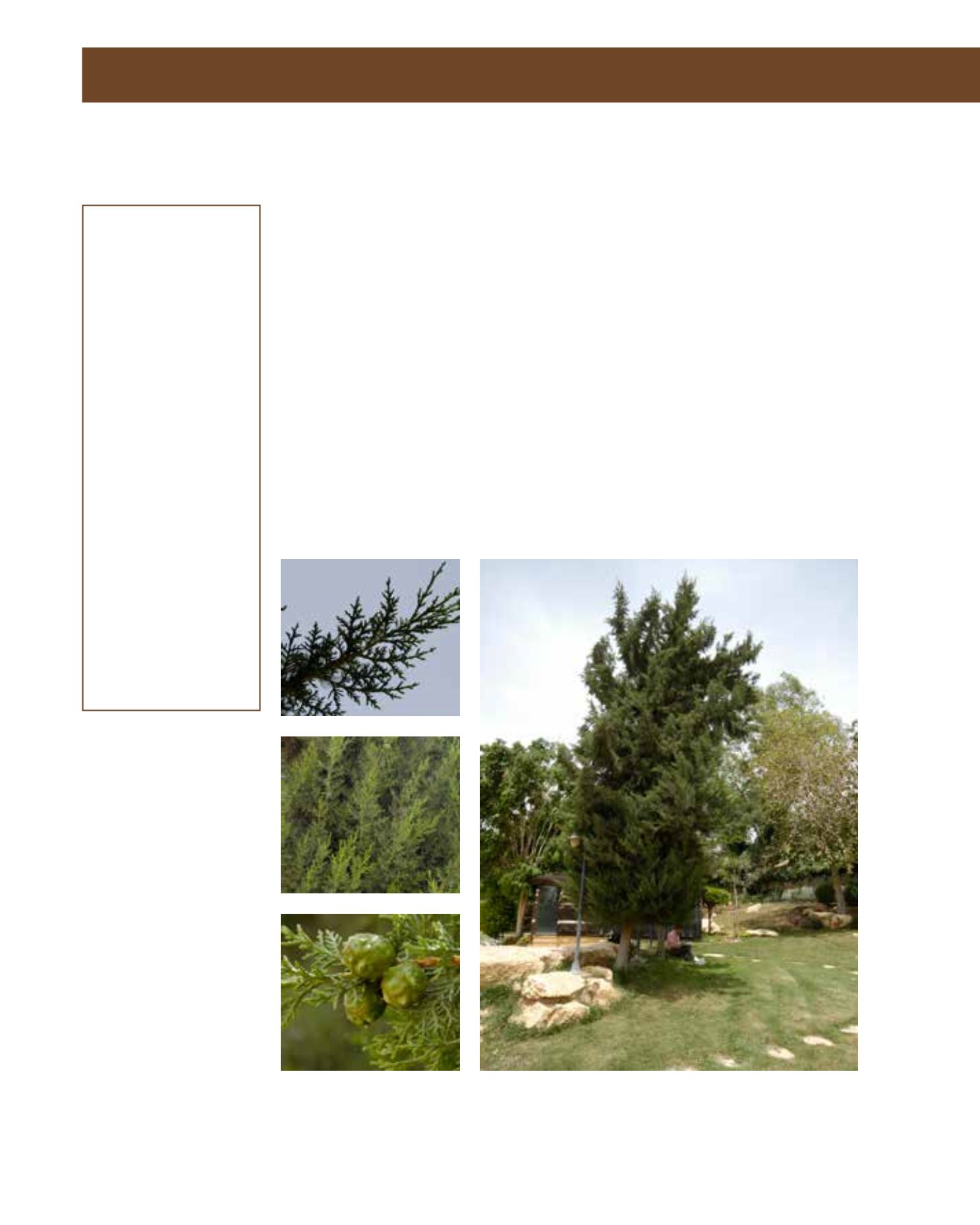

GENERAL
Origin
:
Mediterranean,
sub-Mediterranean,
sub-tropical
Humidity
:
very arid, semi-
arid
Propagation :
sowing and
pricking out,
cuttings
Maintenance :
low
CONDITIONS
Urban climate :
vulnerable
Dessication :
resistant
Stagnant water :
vulnerable
Irrigation
:
medium
Salinity/ppm :
moderate (2000
ppm)
Hardiness
:
-25°C
SHAPE
Type
:
tree
Height
:
10 m-20 m
Foliage
:
evergreen
FLOWER
Colour
:
pale yellow
Size
:
0.2 cm
Period
:
March - May
FRUIT
Type of fruit :
cones
Fruit size
:
3 cm
This evergreen conifer, the form of which varies from pyramidal to sometimes rounded, reaches
a height of 10 to 20 m. It is indigenous to the southwest of the USA, principally Arizona, and
Central America. It is found naturally on dry, sterile, rocky mountain slopes with poor soils and
on valley sides. The colour of the scale-like foliage ranges from light green to silvery blue. The
branches are dense and horizontal to the stem. Young branches have a cherry-red bark; the older
bark is deeply furrowed and dark brown. Tolerant of full sun, heat and wind, with a moderate
growth rate, this tree is drought-resistant when established, but thrives with a thorough soaking
every month or so. It is not recommended for soils with a high water table. Sometimes planted as
a windbreak, C. arizonica becomes open and unkempt as it matures, and is thus less effective as
a barrier. It is also susceptible to insect attack, such as cypress bark beetle, when older or under
stress. Subject to leaf scorch when grown as an ornamental in an exposed location. Often planted
for a woodland or forest effect in parks, it is also useful as a space definer. Not often seen in Ar-
riyadh, the Arizona Cypress generally requires little maintenance.
121
Cupressus arizonica,
Cupressaceae
Arizona Cypress
















